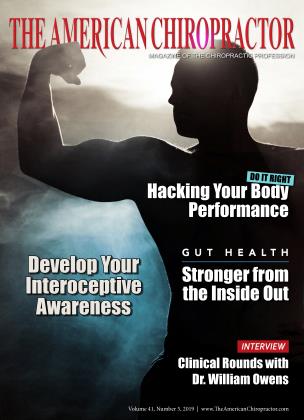The Bladder
ORGAN OF THE MONTH
Howard F. Loomis
Jr., DC
My intention with this series of articles is to call an opportunity to your attention for our profession to offer more to the American people than just relief from structural problems. This belief is based on the premise that stressed visceral organ dysfunctions cause involuntary muscle contractions in those muscles sharing neurological innervation. This is accepted science that was proven over 100 years ago. This basic science concept is beyond reproach since those relationships are established in the third week of embryonic life as we discussed in this article.
Organ of the month
This month, we highlight the urinary bladder. There is an obvious connection between the structural and visceral symptoms associated with this organ and how it is affected by stress, regardless of the source. The space it occupies in the pelvis and the related symptoms gives us a glimpse into what is occurring in the spine above it.
Structural Relationships
Structurally, involuntary muscle contractions occur within the erector spinae as it progresses from its attachments in the sacral region, between the hips, and to the base of the skull. Its various components attach to both spinous and transverse processes.
Because of the visceral and structural connections involved with stress and dysfunction of the urinary bladder, the patient often will present with chronic or recurring structural symptoms that seemingly have nothing to do with bladder function, i.e., lumbosacral pain.
Embryological Connections
Once the embryo has organized into a multilayered structure, neural crest cells form at the border of the neural plate, which serves as the basis for the nervous system. They undergo changes and migrate through the periphery where they differentiate into varied cell types (muscle, epithelial, nerve, and connective tissue). Thus begins the mystifying activity of the neural crest cells as they leave the primitive spinal cord, migrate to the periphery, and proceed with the development of the various body tissues.
They are responsible for forming an incredible list of tissues. For this article, we limit our interest to the support cells of the entire brain and nervous system, and the connections that we know exist between the structural and visceral tissues and the central and peripheral nervous systems.
Development of the bladder begins with the appearance of the embryonic kidney (pronephros). It develops from intermediate mesoderm, as do bone, cartilage, skeletal muscle, tendons, and ligaments. This organ begins in the cervical region of the embryo from the fifth cervical segment to the third thoracic segment, and it appears around the twenty-second day as swellings along both sides of what will eventually become the spine. It will continue during its development from the upper thoracic area down to the lumbar spine.
A series of short evaginations from each somite segment grow to the posterior and inferior. They successively fuse to form the pronephric duct. Each connects to a tube that runs along the spine to drain the yolk sac, and these are the only kidneys we have until about the tenth week. They each have a collecting duct and a nephron and therefore connect to the aorta. The tubes end in what will become the back wall of the adult bladder. This duct is fully contained within the embryo and thus cannot excrete filtered material outside of the embryo.
Stress-Related Symptoms
Stress, regardless of visceral, structural, or emotional source, always evokes the same physiological response cascade on the part of the hypothalamus. We are well aware of the fight-or-flight response in acute stress situations, but often forget that the same response continues unabated if the stress continues daily, which seems to be the case with most of our patients. The question then becomes: Can the affected organ or tissue respond adequately to sympathetic or endocrine stimulation? It will if it has the nutrients to make the energy required. However, when it doesn’t, a different symptom pattern usually develops.
Sympathetic Stimulation
Sympathetic stimulation to the urinary bladder relaxes the muscle and contracts the sphincter, which makes urination difficult and causes incomplete emptying of the bladder’s contents. This makes perfect sense in acute fight-or-flight situations. It becomes more problematic when the stimulation becomes chronic and is continuous.
Once the tissues become exhausted and are no longer able to respond appropriately to sympathetic stimulation, the muscle relaxes and the sphincter closes incompletely. Urinary incontinence is a common problem today, perhaps more commonly seen in women, but a problem for both sexes.
The relationship between the function of the urinary bladder and its position behind the lumbosacral spine, which is influenced by pelvic rotations and fixations as well as lower extremity misalignments, is obvious. Those situations are often quite chronic.
Nutritional Considerations
If the stress has been long continued and the tissues become exhausted, then removal or reduction of the stress is required before improvement can be expected. Of course, nutritional excesses are often the key in these situations.
Paramount in any symptom pattern is the patient’s diet. Look for inadequate protein ingestion or digestion with its many mineral associations, especially calcium, magnesium, and phosphorus. Inquire about digestive symptoms and bowel elimination patterns. Nutritional supplementation should be directed to those areas as opposed to seeking a “magic symptomatic bullet” for relief.
Conclusion
In the months ahead, we will look at the visceral and structural connections between the spleen and lungs.
Dr. Loomis has an extensive background in enzymes and enzyme supplements. He ⅛ the founder and president of the Food " ~ Enzyme Institute™. His extensive knowledge I of physiology, biochemistry, and enzymology has made him a sought-after speaker and a prolific writer. The Food Enzyme Institute offers seminars to health care practitioners around the country. Dr. Loomis published ENZYMES: The Key to Health in 1999, as well as The Enzyme Advantage: For Healthcare Providers and People Who Care About Their Health, also with medical Journalist Arnold Mann, in 2015. Contact info: [email protected], 800-662-2630.
 View Full Issue
View Full Issue









